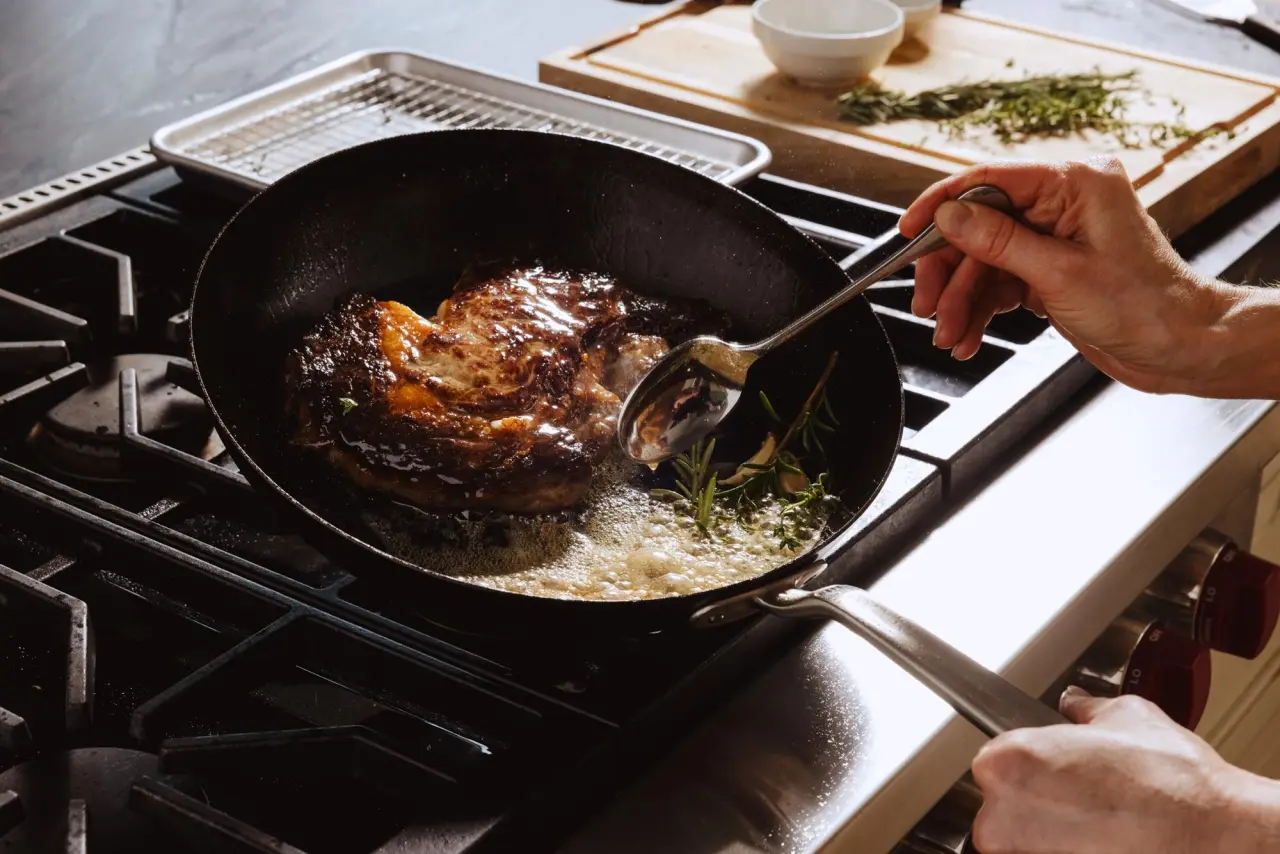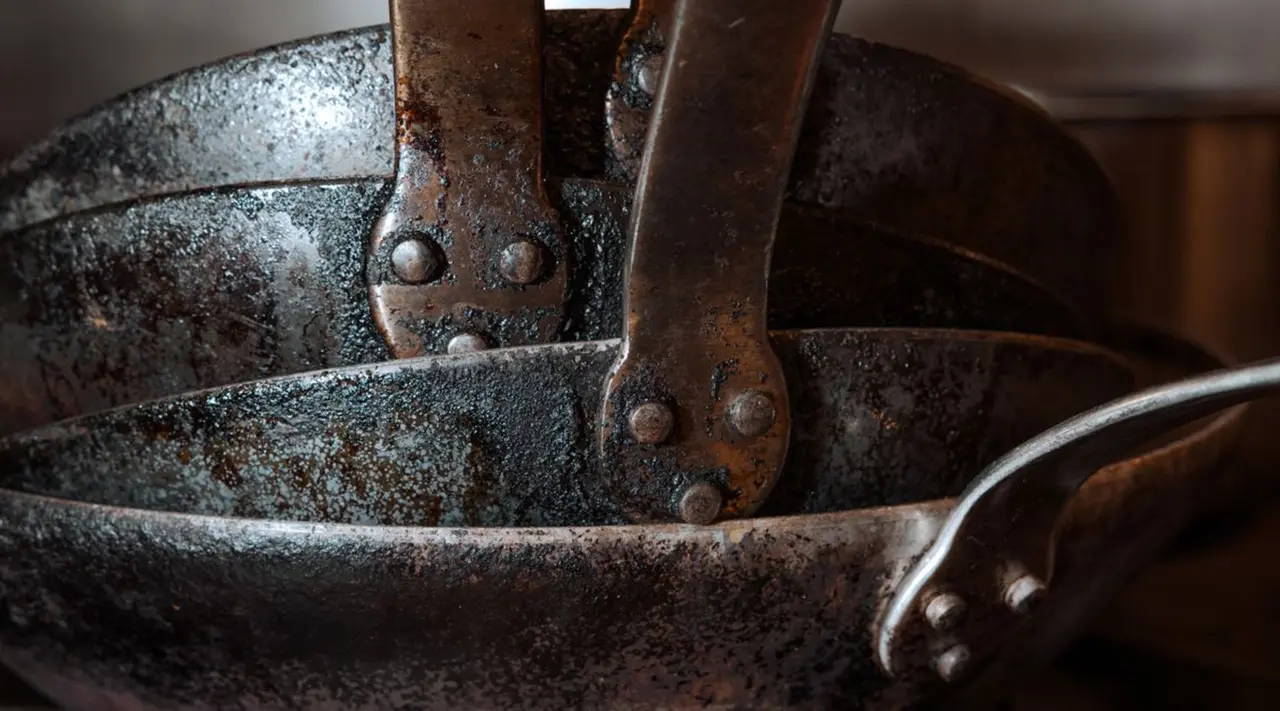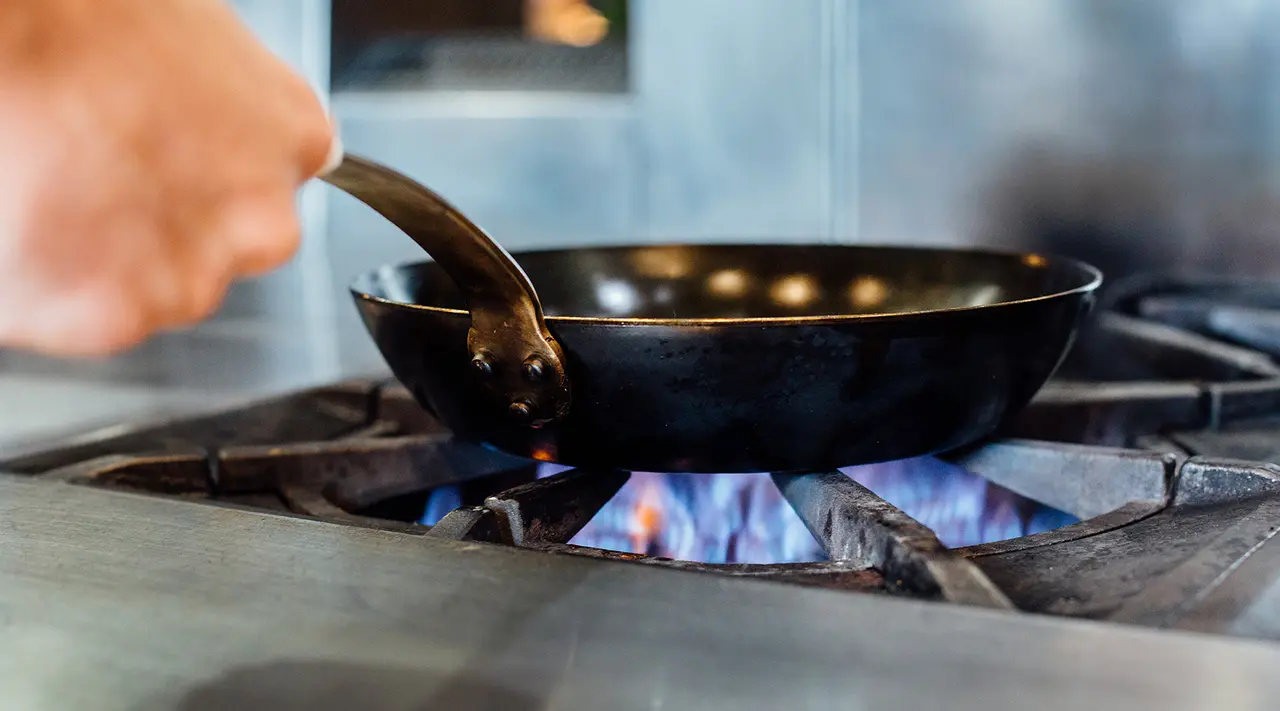For professional chefs, sharpening a chef knife is a weekly—even semi-weekly—task. With hours of filleting, mincing, and butchering to get through, a dull knife is both a hindrance and a safety hazard in the kitchen. For the casual home cook, however, you’re probably not sharpening your knife more than a couple of times a year, maximum.
But that doesn’t (and shouldn’t!) mean you can’t give your knife a quick touch-up in between sharpenings. Enter the honing steel—your newest tool for keeping your blade aligned between sharpening sessions. Here, you’ll learn everything you’ve ever wanted to know about what they are, why they’re different from knife sharpeners, and why you should have one on hand.
What Is a Honing Steel?
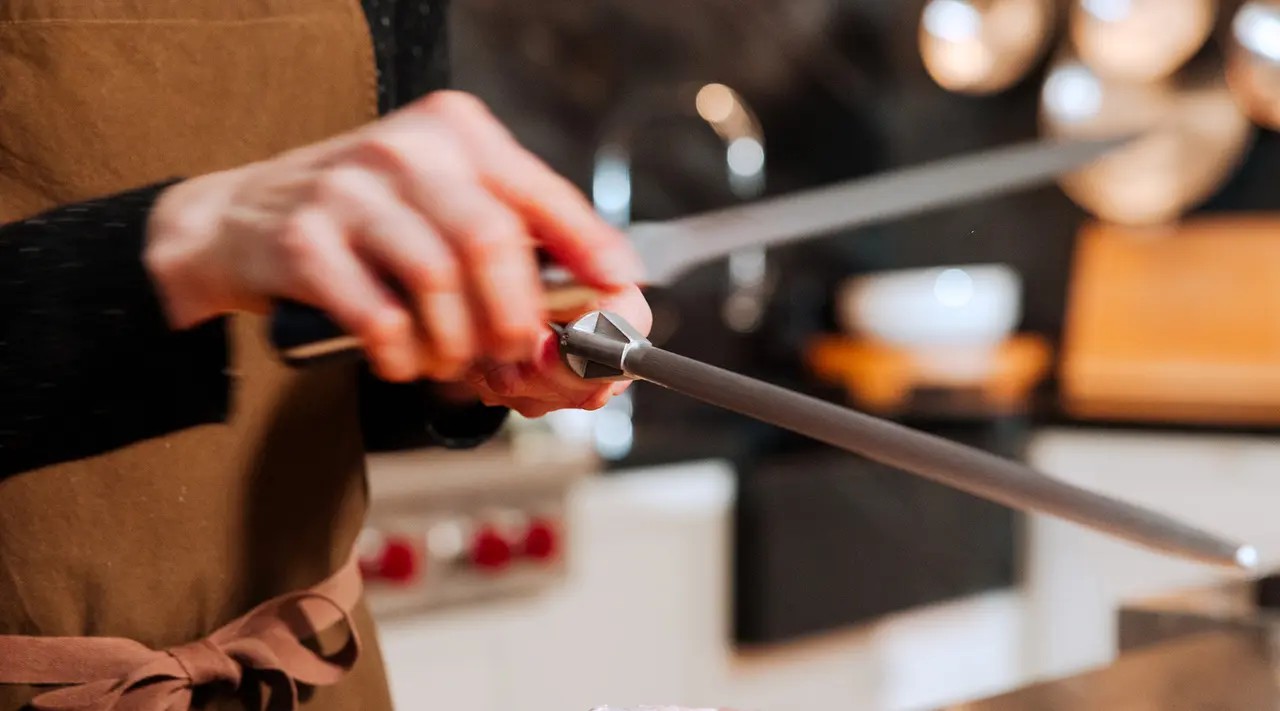
With a long, tubular shape and blunt tip, a honing steel—also called sharpening steel or honing rod—is designed to realign the edge of your knife’s blade with just a few strokes.
How is this process different from sharpening? The difference is, quite literally, microscopic: as you use your knife, the sharpened part of the blade—i.e. the edge—develops tiny (as in, too small to see with the naked eye) dents, dings, and other defects. With sharpening, you’re literally creating a new edge by shaving away incredibly thin layers of metal; with honing, you’re simply pushing the existing edge back into alignment, which can make your blade feel temporarily sharper. You can read more on the differences between honing and sharpening in our guide.
So do you need to hone and sharpen your knife? Short answer: yes. Honing is an excellent way to supplement once- or twice-yearly sharpenings—not to mention, honing is much easier and quicker to learn than whetstone sharpening (our preferred method). That being said, honing can only go so far in restoring that clean, sharp-feeling edge: eventually, your blade will feel dull no matter how much you hone it. At this point, it’s time for a sharpening.
The Made In Honing Steel
To give you the best possible honing experience, we made our new Honing Steel from Tungsten steel. This steel alloy comes close to pure diamond as far as hardness and strength, and offers incredible resistance to heat and corrosion. That means it’ll stick around for as long as—if not longer than—our fully forged, full tang knives.
Our Honing Steel also comes with a built-in angle guide, which helps you find the correct angle for both Eastern-style knives—like the Japanese nakiri—and Western-style knives. We recommend honing Made In Knives at a 15-degree angle.
How to Hone Your Knives
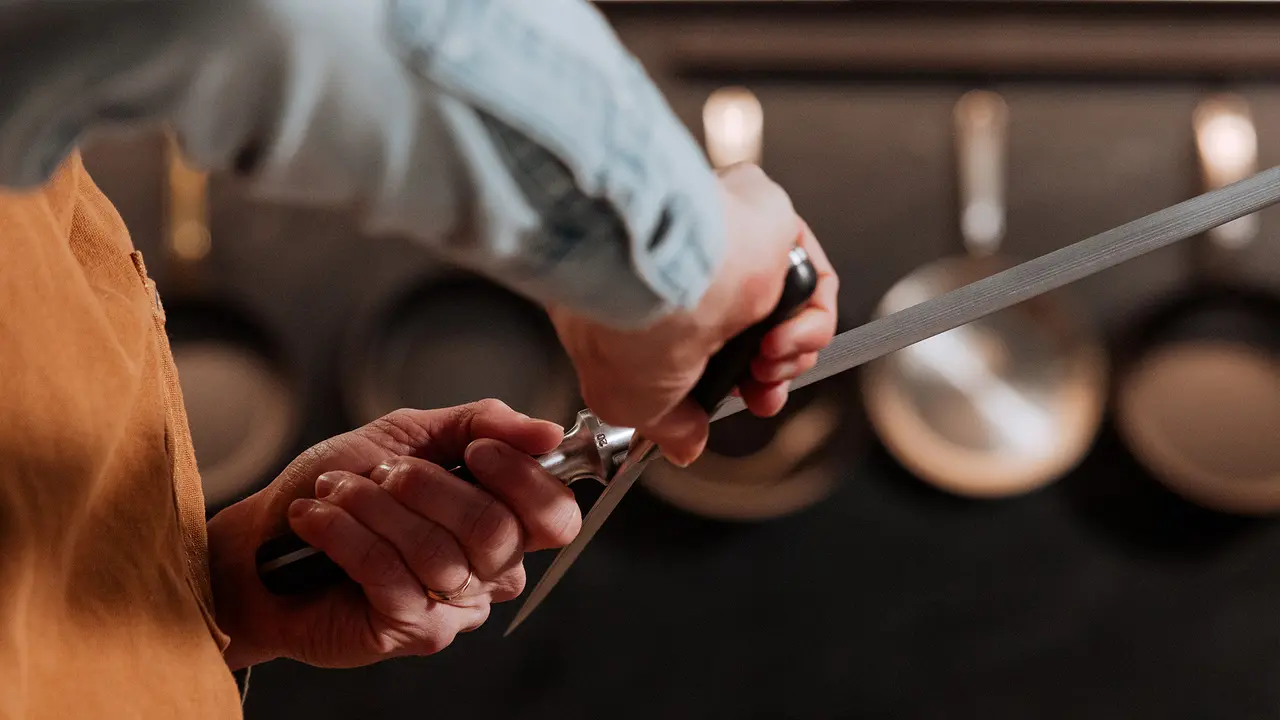
To hone your knife, first make sure you’ve got a level surface and plenty of work space, as well as a dish towel and cutting board to rest your honing steel on. You’ll also want to find the angle of your blade, made easy with our built-in angle guides. Follow along with the video up top along with the written instructions to get the hang of honing.
- Get set up: Set up a dish towel atop a cutting board to stabilize the honing steel. While gripping the handle of your honing steel, place the tip of the steel down onto the dish towel. Keeping the steel steady, place the heel of your blade aligning to either the 15- or 20-degree angle guide, depending on your knife.
- Start honing: Applying only a little bit of pressure and maintaining a consistent angle, draw the blade down and across the honing steel, making sure that the steel makes contact with the full length of the blade. We recommend 8-10 strokes per side.
- Hone the other side: Flip the knife and repeat steps 1 and 2 on the other side of the blade. Since your knife is flipped, the tip of the knife should meet the tip of the steel at the end of each stroke.
Hone Regularly, Sharpen Infrequently
Like we touched on earlier, the average home cook really doesn’t need to sharpen their knives more than a couple of times of year—and we don’t recommend any more than that. Honing is an easy, comparatively user-friendly alternative to sharpening, and the perfect way to quickly prep your knife. You can hone as often as you like, up to after every time you use your knife.
Ready to Shop?
Honing is an irreplaceable part of knife maintenance repertoire—and if you haven’t done so since you bought your knives, consider this your sign to get started. And if you need a honing steel of your own to get the job done, consider this a sign to try ours.
Featuring hard-wearing Tungsten steel, a built-in angle guide, and sleek black POM handle (that’s a perfect match to our Truffle Black handle collection), consider it your new secret weapon for perfectly-aligned knives—and your knife’s new best friend.




